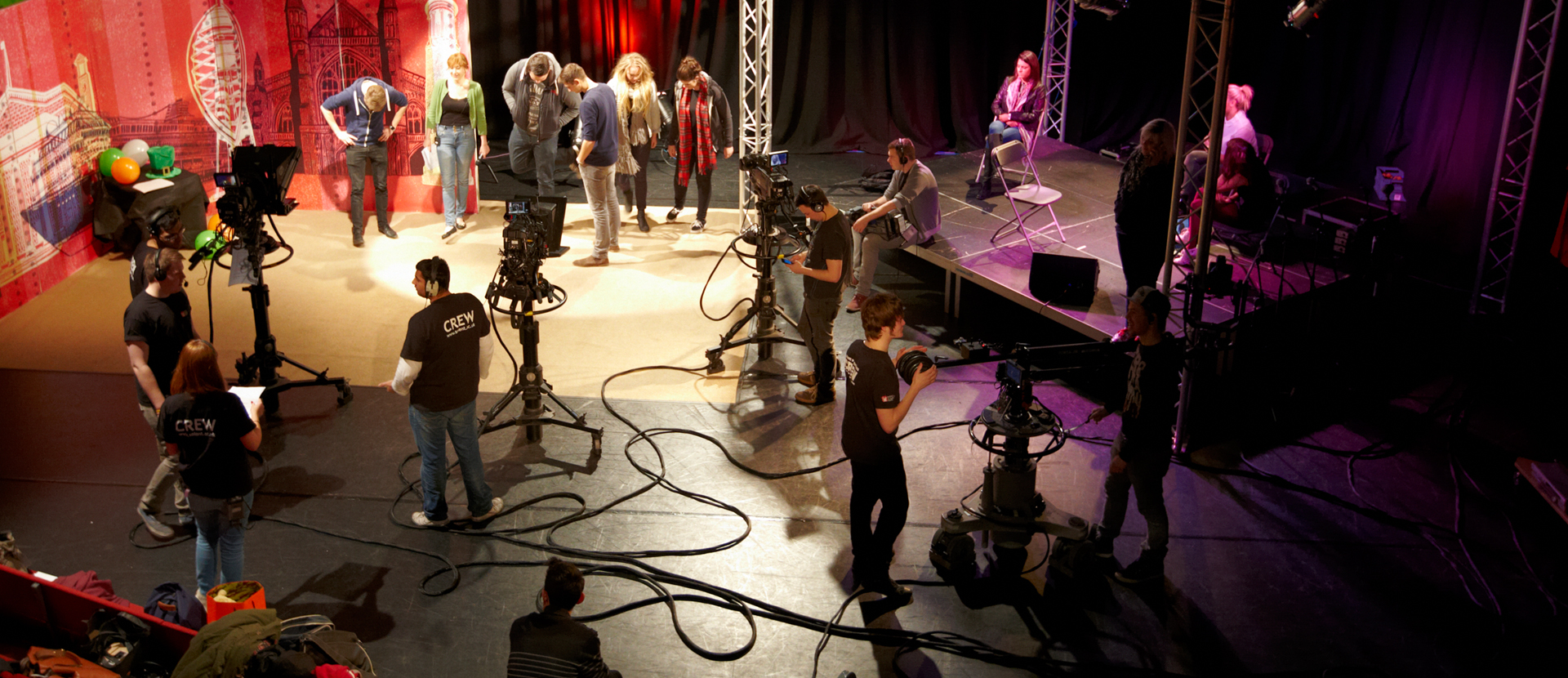
PRODUCTION ANALYSIS
Production and political economic analysis of popular culture have several distinct dimensions. One dimension focuses on media ownership, stressing the fact that more and more of the American mass media is owned by fewer and fewer, very large corporations. The argument usually made is that this “media monopoly” homogenizes content and limits coverage of controversial views, especially those critical of corporate capitalism.

A second dimension stresses the ways in which the values in much mass-mediated culture reflect the class values of the producers of that culture. Again, the claim is that this limits media content, marginalizing the viewpoints of individuals and groups not part of the mostly white, mostly male, mostly upper-middle to upper class folks who control the production of popular culture.
Third, some analysts claim that the commercial or commodity forms that surround popular culture, and the marketing of culture as a commodity, overwhelm content. In other words, the assertion is that popular culture as commercial culture constantly serves to reinforce high consumption and other corporate values as the ultimate social values regardless of whatever values may be promulgated in the cultural texts themselves.
Fourth, production analysis looks at the process by which the often terrible workplaces in which pop items are produced are made invisible to the wealthier folks who consume the beautiful or entertaining items.
Fifth, and finally, some analyses stress the way that constraints in production processes shape content. These analyses tend to stress either “technical constraints” (how the nature of a given technology forms content, i.e. how the visual medium of television reshapes news to emphasize visually dramatic events), and/or “commercial constraints” (how the need to make a profit or showcase products shapes the nature and content of popular culture, i.e. the division of network television into small bites surrounded by commercials).
Often these various dimensions of production analysis are woven together in a given work of criticism. Most important, production analysis draws attention to the fact that no analysis of popular culture is complete unless it sees that culture in the wider, in many ways determining, context of a general political economy. Whatever else popular culture may be, it is deeply embedded in capitalist, for-profit mass production.
General Sites
- 25 years of Media Merger Fascinating graphic charting media monopoly growth and change.
- Concentration of Media Ownership
- Issues in Corporate News Ownership Series of articles from Fairness and Accuracy in Reporting
- Marxist Media Theory
- Media Conglomerates, Mergers and Concentration of Ownership (2010)
- Media Monopoly. Synopsis of classic book by Ben Bagdikian. Data has changed but the argument still holds.
- Media Monopoly Revisited An update on the book by Ben Bagdikian from Fairness and Accuracy in Reporting updating the consolidation of media ownership from the early 1983 to 2010.
- The National Entertainment State Another interesting graphic of pop culture ownership structures.
- Who Owns Television? Charts showing ownership of major network and cable channels.
- Who Owns the Media? A list of corporations who own media companies organized by market.
- Who Owns What? Columbia Journalism Review archive for tracking media conglomerates.
Bibliography
[Few topics on popular culture can be adequately researched on the web alone. These reading suggestions are designed as beginning points for further offline study.]
- Allen, Robert C. Speaking of Soap Operas. Chapel Hill: University of North Carolina Press, 1985.
- Excellent study of the production and consumption of daytime soap operas.
- Allen, Robert C., ed. Channels of Discourse Reassembled: Television and Contemporary Criticism. Chapel Hill: University of North Carolina Press, 1992.
- Introduces a variety of critical approaches to popular culture (semiotics, genre analysis, ideological analysis, etc.) through essays focusing on American television.
- Ewen, Stuart and Elizabeth Ewen. Channels of Desire: Mass Images and the Shaping of American Consciousness. New York: McGraw-Hill, 1982.
- Incisive look at how advertising and related consumer-oriented messages have shaped US culture and consumer consciousness.
- Gamson, Joshua. Claims to Fame: Celebrity in Contemporary America. Berkeley: University of California Press, 1994.
- The best book yet written on the role of pop “celebrities” in US culture, using production, textual and gender analysis.
- Kellner, Douglas. Media Culture: Cultural Studies, Identity and Politics Between the Modern and the Postmodern. London; New York: Routledge, 1995.
- Broad study that offers both a fully developed theoretical model and case studies ranging from Rambo to Madonna to Gulf War news coverage.
- McNair, Brian. Mediated Sex: Pornography and Postmodern Culture. UK: Arnold Publishers, 1996.
- Sociology-based analysis weighing various arguments about the production and consumption of pornography; focused primarily on the US and Britain.
- Radway, Janice. Reading the Romance: Women, Patriarchy and Popular Culture. Chapel Hill: University of North Carolina, 1991.
- One of the most often cited “classics” in American Studies literature, this analysis combines production analysis, textual analysis and ethnographic audience analysis of the “romance novel” genre.
- Film and TV production resources. From the excellent web pages of Screensite.
